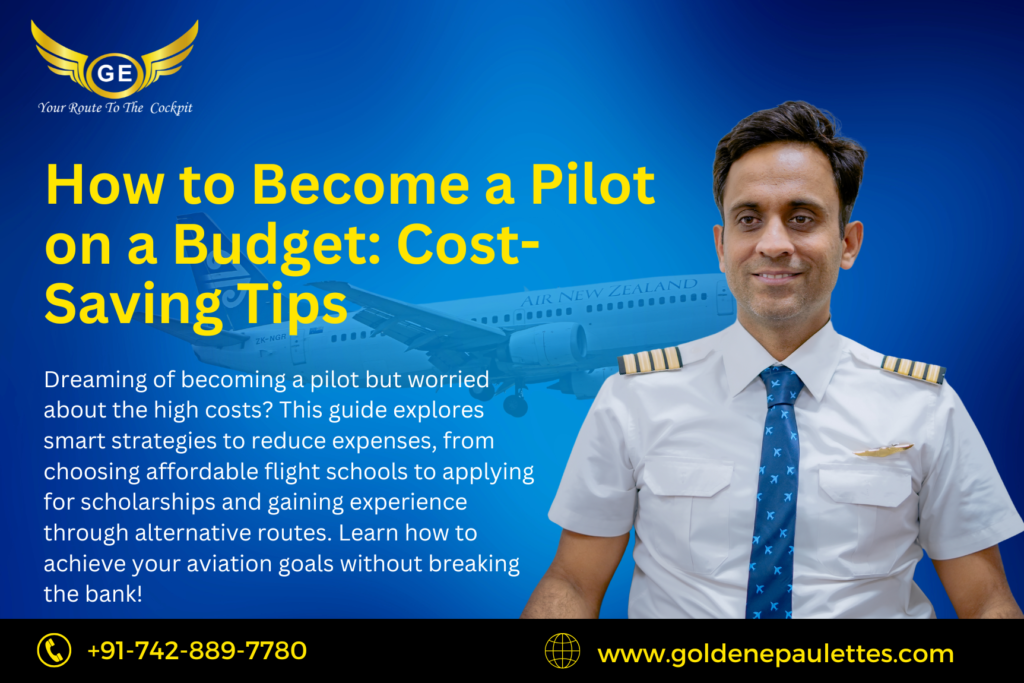How to Become a Pilot on a Budget: Cost-Saving Tips
Introduction
Becoming a pilot is an exciting dream, but the cost of flight training can be overwhelming. If you are passionate about flying but worried about expenses, don’t let financial constraints hold you back. With the right approach, you can achieve your aviation dreams without breaking the bank. In this guide, we’ll share practical tips on how to become a pilot on a budget, helping you save money while obtaining your license.
Understanding the Cost of Pilot Training
The cost of becoming a pilot varies depending on the type of license and training path. Here’s a general estimate:
- Private Pilot License (PPL): $10,000 – $15,000
- Commercial Pilot License (CPL): $30,000 – $70,000
- Airline Transport Pilot (ATPL): $100,000+
However, there are ways to significantly reduce these costs. Let’s explore some cost-saving strategies.
Cost-Saving Tips for Becoming a Pilot
1. Choose an Affordable Flight School
Flight school fees vary greatly. Research multiple flight schools and compare tuition costs, instructor fees, and aircraft rental rates. Consider community flight schools, which may offer lower rates than large aviation academies. Some schools also offer bundled packages, which can provide a discount compared to paying per lesson.
2. Apply for Scholarships and Grants
Many organizations offer scholarships to aspiring pilots. Some well-known scholarships include:
- The Aircraft Owners and Pilots Association (AOPA) Scholarships
- The Experimental Aircraft Association (EAA) Flight Training Scholarships
- The Women in Aviation International (WAI) Scholarships
- The National Business Aviation Association (NBAA) Scholarships
Applying for multiple scholarships can significantly reduce your training expenses. Additionally, some flight schools offer in-house financing or discounts for top-performing students.
3. Opt for a Pay-As-You-Go Plan
Some flight schools allow students to pay per lesson instead of requiring large upfront payments. This flexibility helps you manage costs better and avoid debt. Breaking down costs into smaller payments allows you to work and pay as you train, reducing financial pressure.
4. Train at an FBO (Fixed-Base Operator)
Instead of attending an expensive aviation university, consider training at an FBO. These small flight training centers often offer lower rates and personalized instruction. Local FBOs may also have connections to airlines or corporate flight departments, which could help you find job opportunities after training. If you are looking for how to become pilot affordably, this is a great option.
5. Save on Flight Hours
If you’re wondering how to become pilot without spending a fortune, maximizing flight hours efficiently is key:
- Use a flight simulator: Practicing on certified flight simulators can reduce training time and costs.
- Fly with a buddy: Split costs by flying with a training partner and sharing rental fees.
- Take advantage of good weather: Poor weather can delay lessons, increasing overall costs. Scheduling lessons strategically can help you avoid cancellations and wasted expenses.
- Practice with an instructor efficiently: Plan lessons carefully to get the most out of each session. Arrive prepared and review materials before flights to reduce unnecessary training time.
6. Work While Training
Many flight schools offer part-time instructor or ground crew positions. Working in aviation-related jobs can give you experience while earning money for training. Some airlines or aviation companies even offer tuition assistance for employees looking for how to become pilot while managing costs effectively.
7. Join a Flying Club
Flying clubs offer lower aircraft rental rates than traditional flight schools. Membership fees are often reasonable, making them a cost-effective training option. Additionally, flying clubs often provide mentorship opportunities, networking connections, and access to affordable training programs.
8. Choose the Right Aircraft
Some aircraft are more expensive to rent than others. Training in cost-efficient planes like the Cessna 150, Cessna 152, or Piper Cherokee can save you a significant amount. Avoid training in high-performance or multi-engine aircraft unless required.
9. Use Student Discounts
Many aviation suppliers, software providers, and equipment rental companies offer student discounts. Always check for discounts on:
- Pilot gear (headsets, flight bags, uniforms)
- Books and training materials
- Flight planning software and mobile apps
10. Consider Military or Airline-Sponsored Training
If you’re open to a structured path, programs like the U.S. Air Force, Navy, or airline cadet programs cover training costs in exchange for service commitments. Some airlines also offer cadet programs, where they sponsor your training in exchange for a work contract after certification.
11. Rent Instead of Owning an Aircraft
Owning an aircraft is expensive, with maintenance, insurance, and hangar costs. Instead, rent an aircraft for training. Some flight schools offer block-time discounts, which means you can prepay for flight hours at a lower rate.
12. Network in the Aviation Community
Engaging with experienced pilots, instructors, and industry professionals can help you find cost-saving opportunities. Join aviation forums, attend aviation events, and participate in networking groups to learn about affordable training options and financial aid.
Conclusion
Becoming a pilot doesn’t have to be financially overwhelming. By following these budget-friendly strategies, you can achieve your aviation dreams without excessive costs. With careful planning, resourcefulness, and dedication, you can take to the skies without breaking the bank.



